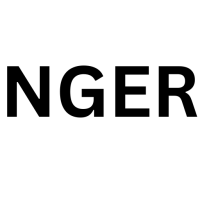Summary
Cut through the green tape
We don't push agendas. At Net Zero Compare, we cut through the hype and fear to deliver the straightforward facts you need for making informed decisions on green products and services. Whether motivated by compliance, customer demands, or a real passion for the environment, you’re welcome here. We provide reliable information—why you seek it is not our concern.
Details
- Australia
Deep dive
Background
Australia’s National Greenhouse and Energy Reporting (NGER) Scheme, established in 2007 under the NGER Act, is the cornerstone of the country’s corporate emissions and energy reporting framework. Introduced to address the lack of standardized emissions tracking, the NGER Scheme replaced fragmented state-level reporting systems with a unified national approach. It was designed to enhance transparency, support Australia’s international climate commitments, and inform policy development, including later initiatives like the Safeguard Mechanism (2015), which sets emissions limits on high-emitting facilities. The NGER Scheme is administered by the Clean Energy Regulator (CER) and collects data on greenhouse gas (GHG) emissions, energy production, and consumption, forming the basis for Australia’s national GHG inventory.
Reporting Requirements: What, How, and When
As detailed in the NGER regulations, the scheme mandates affected entities to report Scope 1 (direct) and Scope 2 (indirect) emissions, energy production, and energy consumption annually. Scope 1 includes emissions from fuel combustion, industrial processes, and fugitive releases (e.g., methane leaks), while Scope 2 covers indirect emissions from purchased electricity. Reporting must follow methodologies outlined in the annually updated NGER Measurement Determination, which specifies four calculation methods, ranging from default emission factors (Method 1) to direct monitoring (Method 4) for higher accuracy. Entities submit reports via the Emissions and Energy Reporting System (EERS) by 31 October each year, covering the previous financial year.
Affected Entities and Scope
The NGER Scheme applies to controlling corporations and facilities that exceed specific GHG emissions thresholds:
Facility-level: 25,000+ tonnes CO₂-e (Scope 1 + 2) or 100+ terajoules (TJ) of energy produced/consumed.
Corporate-level: 50,000+ tonnes CO₂-e or 200+ TJ across all facilities.
Industries most impacted include mining, energy generation, manufacturing, and transport, with approximately 900–1,000 entities required to report annually. Foreign corporations operating in Australia must also comply if they meet thresholds, while subsidiaries are grouped under their Australian parent company’s reporting obligations.
Entities are required to register under the NGER Scheme if they meet any of the reporting or registration thresholds outlined in the NGER Act. The CER actively monitors industries and companies to identify potential non-reporters, engage with them regarding their obligations, and encourage timely registration to prevent non-compliance. According to the CER, 877 controlling corporations were registered under the NGER scheme during the 2023–24 reporting period. Collectively, these corporations reported 303 million tonnes of Scope 1 greenhouse gas (GHG) emissions (CO₂-e) and 74 million tonnes of Scope 2 emissions for the same period.
Penalties for Noncompliance
Noncompliance with NGER reporting requirements can result in significant penalties. The NGER Act specifies civil penalties for various contraventions, including failures to submit required reports or exceedance of emissions baselines. For instance, failing to submit a report on time can incur a civil penalty of 100 penalty units per day of noncompliance. Moreover, under the reformed Safeguard Mechanism, which commenced its first compliance period in 2023–24, facilities that exceed their emissions baselines without appropriate management face stringent penalties. The initial civil penalty is $330 for each tonne of emissions over the baseline, plus an additional $33,000 for each day the facility remains noncompliant. The CER has emphasized the importance of timely and accurate reporting in its 2024-24 enforcement priorities. Repeated failures to report on time or inaccuracies in reporting can trigger compliance or enforcement actions, including the issuance of infringement notices or commencement of civil penalty proceedings. The CER also publishes a list of late reporters on its website, and inclusion on this list may carry reputational risks for noncompliant entities.


